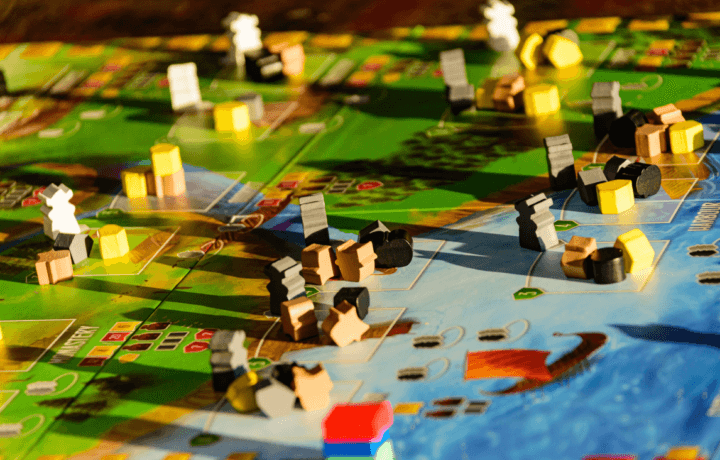The United States Marine Corps is taking wargaming to a whole new level with their plans to build a new facility in Quantico, VA., next year. The 100,000-square-foot Wargaming and Analysis Center will reportedly house an auditorium, gaming classrooms, a conference room, and other spaces to support wargaming. The facility will be used to host more than a dozen wargames each year including a pair of large-scale 250-person exercises to boost decision-making on the battlefield. The simulation will provide a realistic interpretation of the future operating environment.
“In order to stay ahead of peer competitors, it is vital that the Marine Corps conduct constant wargames,” said Lt. Gen. Eric Smith, deputy commandant, Combat Development and Integration (CD&I).
“The data that comes from such wargames enables us to more rapidly determine which capabilities we will need for future fights,” Smith added. “A wargaming center at Quantico ensures that these wargames take place at the home of Combat Development, the Warfighting Laboratory, Marine Corps University and our Acquisitions Command, and ensures that this purpose-built facility is easily accessible for all those in the National Capitol Region who similarly need this capability.”
The Marine Corps Systems Command (MCSC) is working with CD&I, the Warfighting Laboratory, and private industry to build the facility and to procure the required capabilities.
“The Marine Corps Wargaming and Analysis Center will serve the Commandant of the Marine Corps, Headquarters Marine Corps staff, and the Operating Forces,” said Sharleene Prieur, MCSC’s deputy program manager for the Wargaming Capability. “It will also support the Corps’ ability to wargame with the Office of the Secretary of Defense and our [Joint, Interagency, Intergovernmental and Multinational] partners.”
Wargaming Capabilities Increase Abilities to Thwart Opponents
A variety of wargames that simulate realistic warfare will be utilized at the new facility. This could include board games, but it can also include computer-based exercises and even artificial vehicles or simulators that allow users to experience operating in a hostile environment.
The Marine Corps already employs these wargames to enhance tactical and strategic decision-making, to test new tactics and strategies, and to predict trends for future conflicts. The wargaming center’s capabilities will further enable users to identify issues, consider objectives, and scope and analyze the problems. The resulting wargames will provide data and analytics to inform decisions affecting force development, force management, system functionality, and service functionality.
“The true value proposition of wargaming lies in the construction of a competitive framework allowing the thinking enemy to confront and thwart his opponent and thereby challenge concepts, capabilities and force design,” explained William J. Lademan, technical director for the Wargaming Division at MCWL.
The Wargaming and Analysis Center is scheduled for completion in fourth quarter of fiscal year 2023. It is expected to reach Initial Operating Capability in fiscal year 2024 and hit Full Operational Capability in fiscal year 2025. The Wargaming Capability Program Office at MCSC will continue to provide acquisition support for the facility throughout its lifecycle.
Development of Wargaming in History
There are wargames that are large scale exercises that put troops in the field with actual equipment to simulate the combat experience, and then there are simulations that aren’t really all that different from the tabletop board games like “Risk” or “Stratego” – just far more complex in terms of rules. Military leaders have relied on both forms for eons, and Roman commanders were among the first to use sand tables and abstract icons to represent soldiers and units in battle.
Over the centuries that have followed, military thinkers played such games as “Chess” and “Go” to hone their cognitive abilities; while it was in the 19th century that the United States Naval War College employed wargames to plan U.S. defenses against a theorized British naval invasion of New York harbor. The wargames that most civilians would play remained rather simple, but after World War II, Charles Robert – who was awaiting his commission in the U.S. Army – developed a game to hone his tactical skills. The game was aptly dubbed “Tactics,” and Roberts eventually went on to found the board game company Avalon Hill (now owned by Hasbro), which developed a series of board games including a commercial version known as “Tactics II.”
Military themed games have developed considerably, and this includes visually rich maps, wooden or plastic pieces and decks of cards with robust artwork. As training aids, such niceties were probably considered unnecessary, but now military leaders are seeing how this can immerse the player deeper into the experience.



